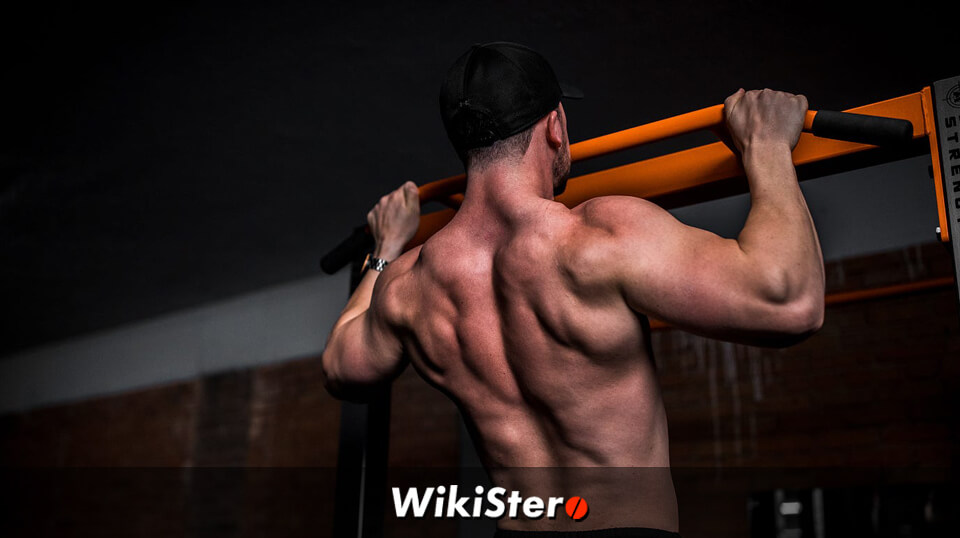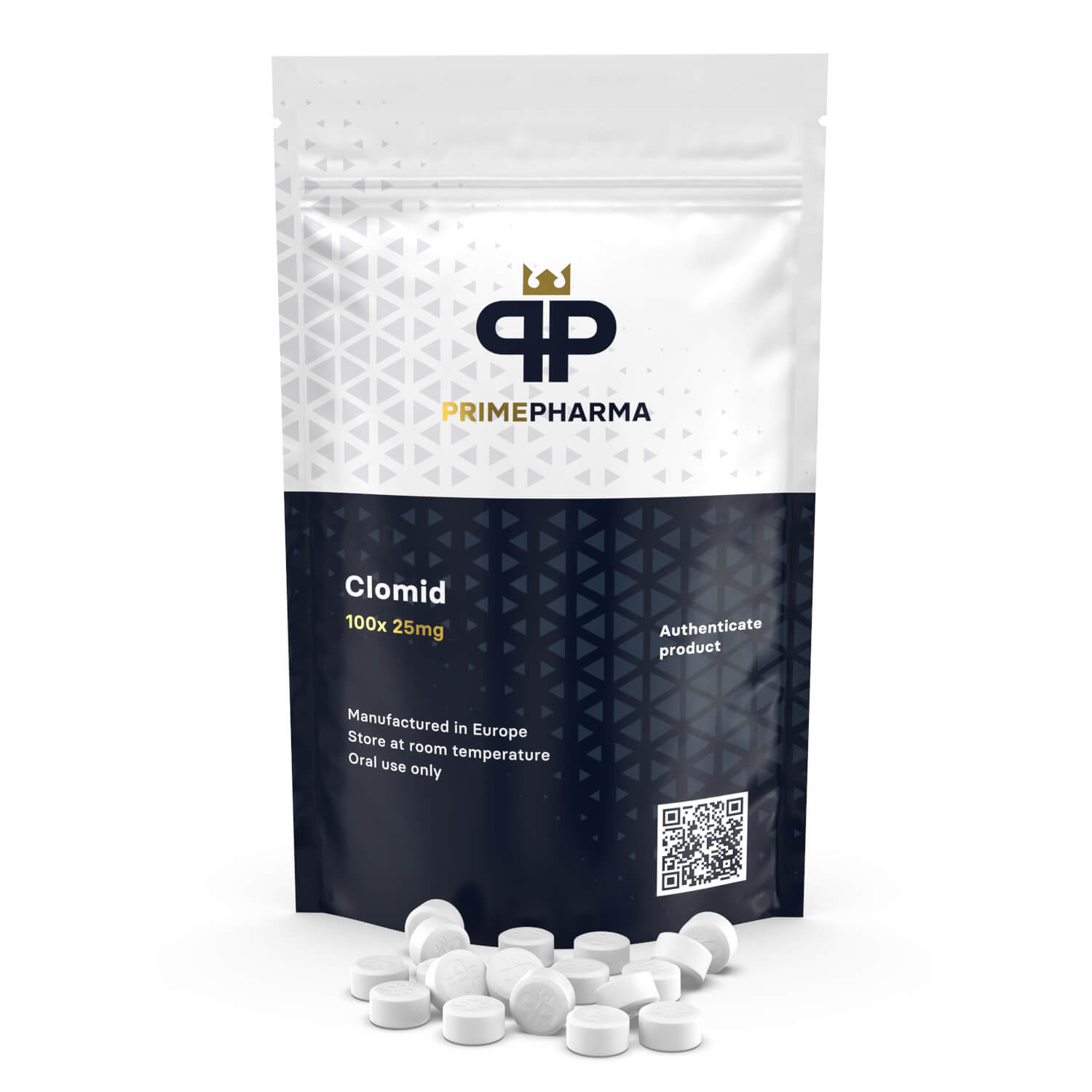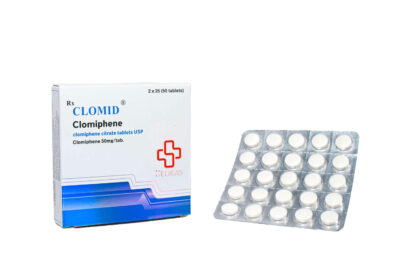 Clomid, ou citrate de clomifène, est un médicament largement reconnu dans les milieux du bodybuilding et de l’athlétisme pour son rôle dans la thérapie post-cycle (PCT).
Clomid, ou citrate de clomifène, est un médicament largement reconnu dans les milieux du bodybuilding et de l’athlétisme pour son rôle dans la thérapie post-cycle (PCT).
La PCT est une phase essentielle qui suit la fin d’un cycle de stéroïdes anabolisants, visant à restaurer la production hormonale naturelle du corps et à atténuer les effets secondaires.
Dans ce guide, nous allons approfondir l’importance de la PCT, le fonctionnement de Clomid, ses avantages, ses effets secondaires possibles et la manière d’incorporer correctement Clomid dans votre régime de PCT.
Comprendre la thérapie post-cycle (TPC)
Lorsque des stéroïdes anabolisants sont introduits dans l’organisme, ils modifient considérablement l’équilibre hormonal naturel en supprimant la production de testostérone par l’organisme.
Cette suppression se produit parce que les stéroïdes exogènes (externes) fournissent une quantité plus que suffisante de testostérone ou de ses dérivés, ce qui entraîne une diminution, voire un arrêt, de la production naturelle de l’organisme.
Une fois le cycle stéroïdien terminé, l’organisme est confronté à une période difficile de déséquilibre hormonal.
En l’absence d’intervention, cette période peut entraîner une chute spectaculaire du taux de testostérone, avec pour conséquence une perte de masse musculaire, une augmentation du dépôt de graisse, des troubles de l’humeur et d’autres problèmes de santé.
Lathérapie post-cycle (PCT) est cruciale car elle permet de relancer la production naturelle de testostérone de l’organisme, garantissant ainsi une transition en douceur vers l’arrêt des stéroïdes et la préservation des gains musculaires durement acquis.
Comment fonctionne Clomid ?
Clomid est un modulateur sélectif des récepteurs d’œstrogènes (SERM).
Pour comprendre son mécanisme, il est essentiel de saisir le rôle des œstrogènes dans la physiologie masculine.
L’œstrogène, bien que principalement connu comme une hormone féminine, joue également un rôle essentiel dans le corps masculin.
Lorsque la testostérone se transforme en œstrogènes, des niveaux élevés d’œstrogènes peuvent signaler au cerveau de réduire ou d’arrêter la production de testostérone par une boucle de rétroaction impliquant l’axe hypothalamo-hypophyso-gonadique (HPG).
Clomid agit en bloquant les récepteurs d’œstrogènes, en particulier dans l’hypothalamus, ce qui incite le cerveau à percevoir de faibles niveaux d’œstrogènes.
En conséquence, l’hypothalamus libère davantage d’hormone de libération des gonadotrophines (GnRH), ce qui incite l’hypophyse à produire de l’hormone lutéinisante (LH) et de l’hormone folliculo-stimulante (FSH).
Ces hormones sont essentielles pour stimuler la production de testostérone par les testicules, rétablissant ainsi les niveaux naturels de testostérone. 
Avantages de Clomid dans le cadre de la PCT
1. Rétablir les niveaux naturels de testostérone :
La suppression de la testostérone au cours d’un cycle stéroïdien peut être profonde.
En stimulant la production de LH et de FSH, Clomid aide les testicules à reprendre une production normale de testostérone.
Ce processus est essentiel pour éviter un effondrement post-cycle, où les niveaux de testostérone peuvent chuter, entraînant une perte musculaire significative et d’autres effets négatifs sur la santé.
2. Préserver la masse musculaire :
Des niveaux élevés de testostérone sont essentiels au maintien de la masse musculaire.
En l’absence d’une PCT appropriée, la diminution de la testostérone peut conduire au catabolisme, c’est-à-dire à la dégradation du tissu musculaire.
Clomid aide à maintenir les conditions anaboliques (construction musculaire) en assurant des niveaux de testostérone adéquats, préservant ainsi les gains musculaires réalisés pendant le cycle stéroïdien.
3. Amélioration de l’humeur et des niveaux d’énergie :
La testostérone influence l’humeur, les niveaux d’énergie et le bien-être général.
Un faible taux de testostérone peut entraîner une dépression, de la fatigue et de l’irritabilité.
En normalisant les niveaux de testostérone, Clomid aide à stabiliser l’humeur et l’énergie, contribuant ainsi à une meilleure santé mentale et physique.
4. Réduire le risque d’effets secondaires œstrogéniques :
Bien que Clomid agisse principalement en bloquant les récepteurs d’œstrogènes pour stimuler la production de testostérone, il aide aussi indirectement à gérer les effets secondaires liés aux œstrogènes.
Des niveaux élevés d’œstrogènes après le cycle peuvent entraîner une gynécomastie (développement de tissus mammaires chez les hommes) et une rétention d’eau.
En modulant la réponse de l’organisme aux œstrogènes, Clomid contribue à atténuer ces risques.
Comment utiliser Clomid pour la PCT
L’utilisation de Clomid dans le cadre de votre PCT nécessite un examen minutieux du moment, du dosage et de la durée.
Voici un protocole détaillé :
1. Calendrier :
Le meilleur moment pour commencer à prendre Clomid est environ deux semaines après la dernière injection de stéroïdes.
Notez toutefois que ce délai dépend du type de stéroïde anabolisant utilisé.
Par exemple, si vous utilisez des stéroïdes à ester court comme le propionate de testostérone, vous pouvez commencer à utiliser Clomid un jour ou deux plus tôt après votre dernière injection.
En revanche, si vous utilisez des stéroïdes à ester long comme l’énanthate de testostérone, vous devrez peut-être attendre deux à trois semaines ou 14 à 21 jours avant de commencer à utiliser Clomid.
Ce délai permet aux stéroïdes synthétiques de s’éliminer correctement de votre organisme, ce qui rend la PCT plus efficace.
Si vous commencez trop tôt, votre corps risque de ne pas avoir le temps de s’adapter, tandis que si vous commencez trop tard, vous risquez de prolonger la période de faible taux de testostérone.
2. Dosage :
Le schéma habituel de Clomid commence par une dose plus élevée pour lancer le processus, suivie d’une diminution progressive.
Voici un protocole type : Semaine 1 : Commencez par une dose de 100 mg par jour.
Cette dose plus élevée permet d’augmenter rapidement les taux de LH et de FSH.
Semaines 2-3 : réduisez la dose à 50 mg par jour.
Cela permet de maintenir la stimulation de la production de testostérone tout en permettant à l’organisme de s’adapter.
Semaine 4 : Diminuez progressivement jusqu’à 25 mg par jour.
Cette dernière étape permet à l’organisme de revenir à un équilibre hormonal normal sans changements brusques.
Il est également important de noter que le protocole Clomid peut varier de manière significative et qu’il peut être influencé par votre dose de stéroïdes et la durée du cycle.
Il est donc utile de se rappeler que votre protocole Clomid peut être ajusté pour répondre aux besoins de votre cycle individuel et cela s’applique également au fait que vous utilisiez Clomid seul ou en combinaison avec d’autres composés tels que Nolvadex ou HCG pendant votre protocole PCT.
3. La durée de l’opération :
La durée d’utilisation de Clomid est généralement de 4 à 6 semaines, en fonction de la longueur et de l’intensité du cycle stéroïdien.
Les cycles plus courts peuvent ne nécessiter que 4 semaines, tandis que les cycles plus longs et plus intenses peuvent nécessiter 6 semaines complètes pour assurer une récupération complète.
 Effets secondaires potentiels de Clomid
Effets secondaires potentiels de Clomid
Bien que Clomid soit généralement bien toléré, il est important de connaître les effets secondaires potentiels suivants ;
1. Troubles visuels :
Certaines utilisatrices peuvent avoir une vision floue ou d’autres troubles visuels, tels que des éclairs de lumière ou des corps flottants.
Ces symptômes sont généralement temporaires et disparaissent après l’arrêt de Clomid.
Toutefois, en cas de troubles visuels graves ou persistants, il est important de consulter un professionnel de la santé.
2. Sautes d’humeur :
Bien que Clomid puisse améliorer l’humeur en rétablissant les niveaux de testostérone, il peut également provoquer des sautes d’humeur ou une instabilité émotionnelle chez certaines personnes.
Il est donc essentiel de surveiller votre humeur et de discuter de tout changement significatif avec un professionnel de la santé.
3. Bouffées de chaleur :
Comme pour les symptômes de la ménopause, certains hommes peuvent ressentir des bouffées de chaleur ou des sueurs nocturnes lorsqu’ils prennent Clomid.
Il s’agit généralement d’effets secondaires légers et transitoires.
4. Problèmes gastro-intestinaux :
Des nausées, des ballonnements ou des maux d’estomac peuvent survenir lorsque vous utilisez Clomid, bien que ces effets secondaires soient relativement rares.
Cependant, un moyen efficace de minimiser l’inconfort gastro-intestinal est de prendre Clomid avec de la nourriture.
Vous envisagez d’utiliser Clomid pour la PCT ?
Il est essentiel de consulter un professionnel de la santé avant de commencer un protocole de PCT.
Un professionnel de la santé peut fournir des conseils personnalisés, s’assurer que Clomid est adapté à vos besoins spécifiques et vous guider sur le dosage approprié, le calendrier et les interactions potentielles avec d’autres médicaments.
Votre santé et votre sécurité devraient toujours être la priorité absolue et chez Wikistero, vous pouvez maintenant contacter notre coach gratuit pour obtenir des conseils personnalisés sur votre cycle de stéroïdes et les options de PCT.
Conclusion
Clomid est un outil puissant pour les athlètes et les bodybuilders qui cherchent à restaurer leurs niveaux naturels de testostérone après un cycle de stéroïdes.
En comprenant comment Clomid fonctionne, ses avantages et comment l’intégrer correctement dans votre régime PCT, vous pouvez maximiser votre récupération et maintenir les gains que vous avez travaillé dur pour atteindre.
Mais n’oubliez pas de toujours privilégier la sécurité et de consulter un professionnel de la santé avant d’entamer un protocole de PCT.
En adoptant la bonne approche, vous pourrez traverser la période post-cycle de manière efficace et soutenir vos objectifs de santé et de forme physique à long terme.